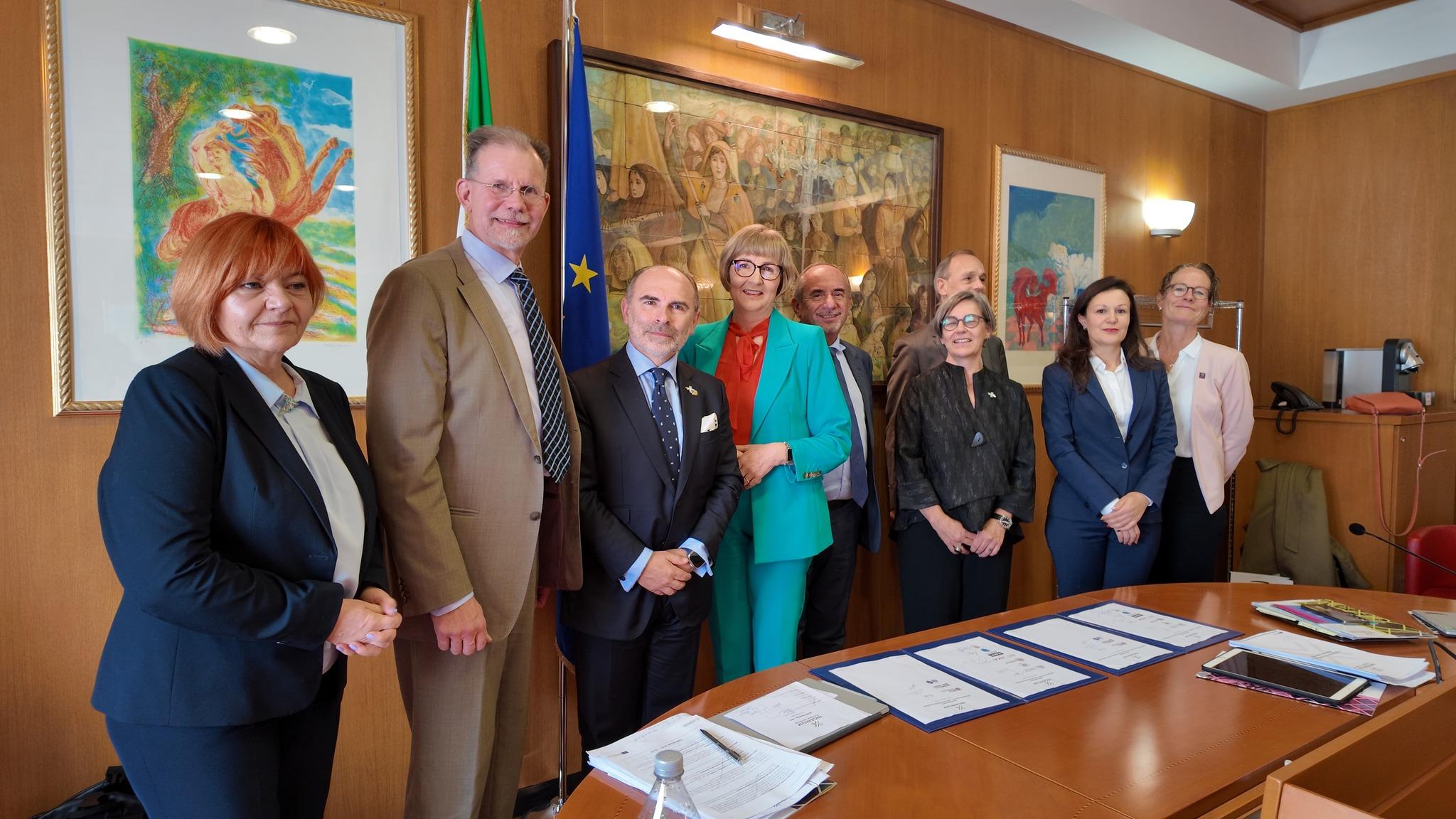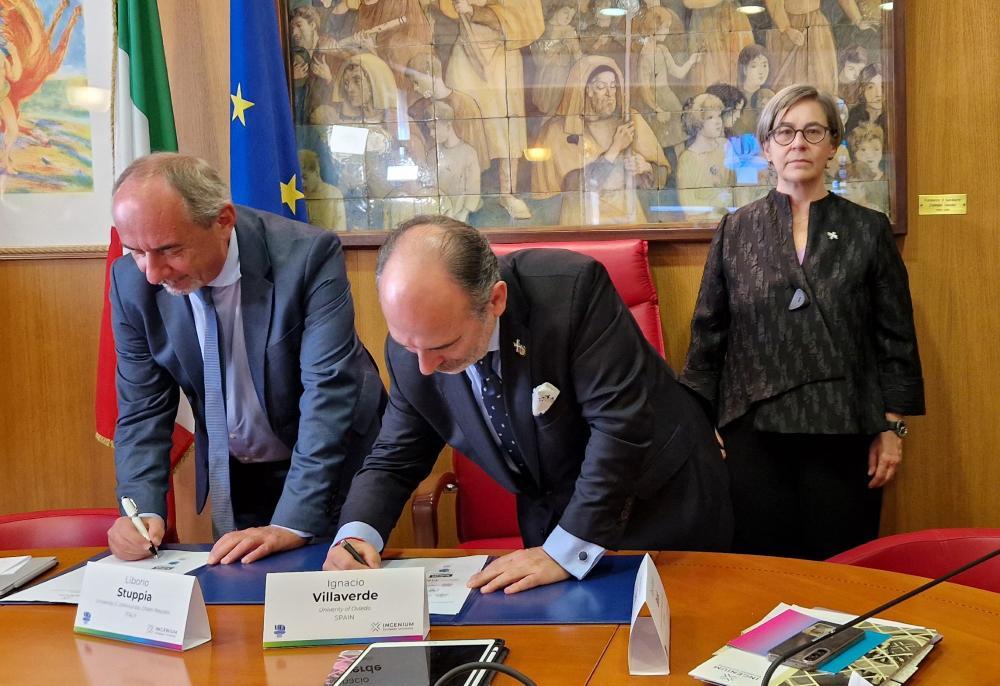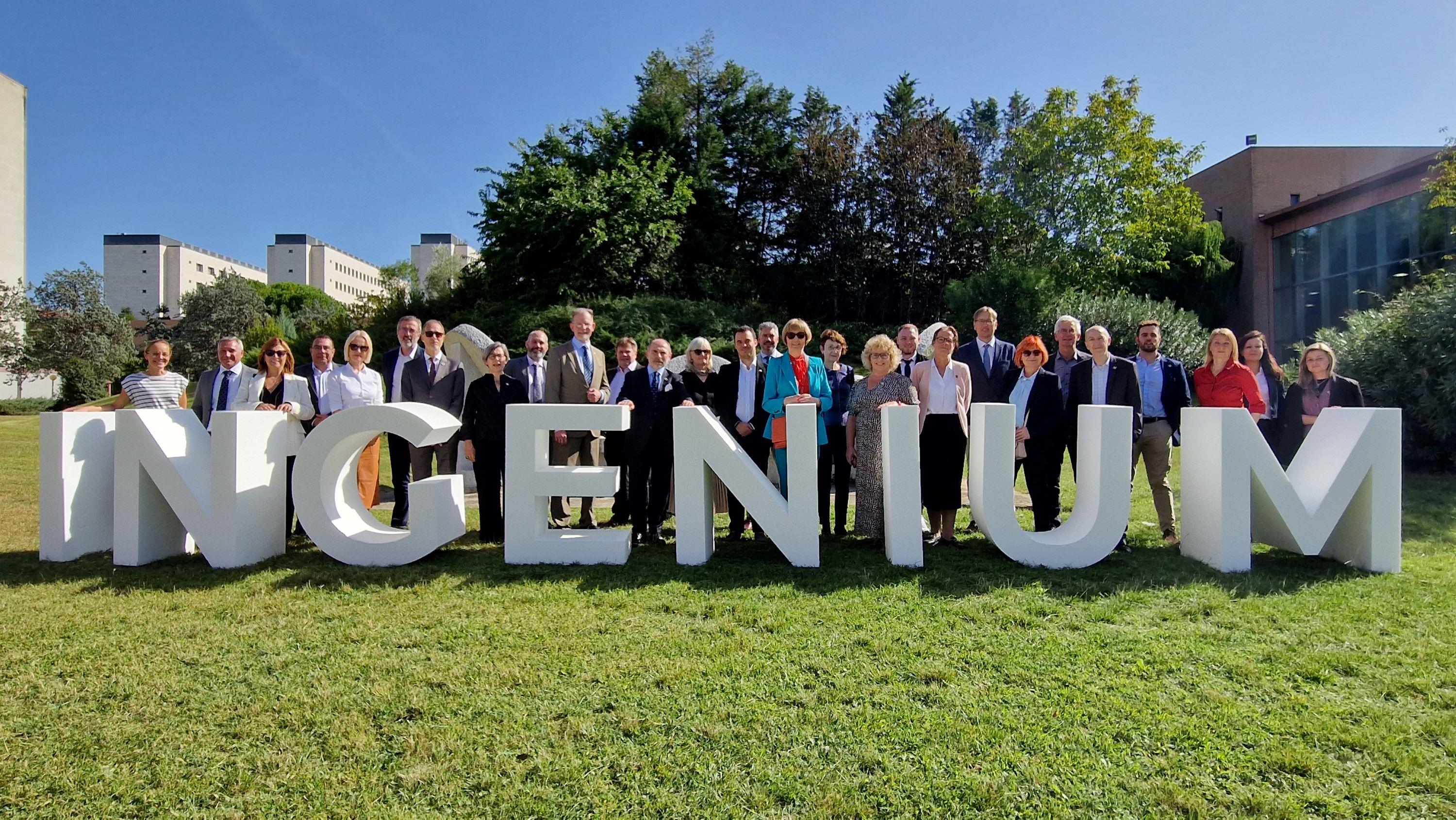Diversity, Inclusion, Well-Being: The INGENIUM Alliance Council meets at UdA
The strategic body of INGENIUM gathered at the “G. d’Annunzio” University of Chieti-Pescara, Italy, on 15-16 October 2024 for a mid-term assessment followed by important decisions for the future of the Alliance.
The INGENIUM Steering Committee and Alliance Council discussed four reports and signed two charters epitomising the joint efforts of the ten partner universities and their continuous commitment to building an inclusive, healthy, and border-free European Campus. To this end, the members of the ISC and IAC began the important work of defining the Alliance’s joint academic portfolio with an undergraduate programme in Entrepreneurship and Innovation and four new Master’s programmes focusing on Medical Rehabilitation, Artificial Intelligence, Chemistry, and Sustainability.
The Council also initiated the process of establishing INGENIUM’s legal entity as a European Grouping of Territorial Cooperation (EGTC), an important decision that will be followed by a period of analysis and consultation.
The partner universities also agreed to participate in a proposal for the launch of an INGENIUM Nanosatellite promoted by Munster Technological University.
Defining the Joint Academic Offer
In the belief that diversity enhances learning, the INGENIUM Alliance Council discussed its Joint Education Offer. The partners agreed to launch their first European Bachelor’s Degree, the undergraduate programme in Entrepreneurship and Innovation proposed by Karlsruhe University of Applied Sciences (HKA), as well as four joint master’s programmes:
- Advanced Practice Nursing in Acute Care
- Artificial Intelligence
- Chemical and Biochemical Process Technology
- Sustainable Development and Circular Economy
Member universities will initiate a process to examine possible pathways for implementing these joint programmes involving as many partner institutions as possible.
“These programmes will be prioritised as strategic for the Alliance but will be developed in parallel with other study programmes that are already in progress or nearing completion, involving two or more Ingenium member universities. These will also be incorporated into the Alliance’s academic offering.”Rector of the University of Oviedo, Professor Ignacio Villaverde
INGENIUM-1: A Satellite for the Alliance
A further, important step towards excellence is the possible creation of the European University Alliance Satellite 1 (EUA-SAT-1) or INGENIUM-1. Promoted by MTU, the proposal consists in the launch of a nano satellite. The rectors present at the Alliance Council decided that each member university will channel the project proposal through research groups. Once the level of interest among the research community is established, work will proceed on a unified project proposal which can ensure new scientific and educational breakthroughs.
A Legal Entity for a Joint European Effort
A core value of the INGENIUM partners is the belief that an Alliance of Diversity can take bold steps, boost mutual knowledge and trust, and pursue transnational goals. This is why the Alliance Council Meeting decided to launch an internal call for the creation of a European Grouping of Territorial Cooperation (EGTC).
After an internal analysis on the feasibility of the project considering the different national legislations, the coordinating university and the technical secretariat of the alliance will guide each step.
The legal structure will allow INGENIUM to act as a vehicle to enhance the involvement of the regions where its ten member universities are based and reach cutting-edge educational, research, and impact results.
A Healthy and Inclusive Campus
The INGENIUM Rectors and Presidents signed two charters that testify to their joint commitment. The Healthy Campus Charter is a framework to foster health within the partner institutions. It emphasizes collective responsibility to promote the core values of the Okanagan Charter, advocating for inclusion, diversity, and sustainability through thoughtful campus-wide actions. By promoting supportive campus environments, the charter calls for collaborative efforts to enhance learning and nurture healthy living. The document champions the creation of a culture of wellbeing, where every individual feels valued and supported. It also underscores the importance of a whole-campus approach, recognising the vital role universities play in shaping a healthier, more equitable future for all.
The Inclusivity Charter is proof of the INGENIUM commitment to equity, diversity, and inclusion (EDI). It emphasises education and training to raise awareness, support for diverse students, and the integration of EDI principles into teaching and learning. By promoting inclusive recruitment, improved accessibility, and strong leadership, it aims to create a welcoming environment for all. The focus on community engagement, anti-discrimination policies, and evaluation of impact ensures that progress is measured and shared, driving positive change across campuses.
URN and XAMX for PhD Candidates
URN and XAMK signed a Joint Research Agreement, marking a milestone in their collaboration under the INGENIUM European University Alliance. The agreement will increase collaborative research between the two institutions, facilitating the joint supervision of PhD candidates within the XAMK academic community.



